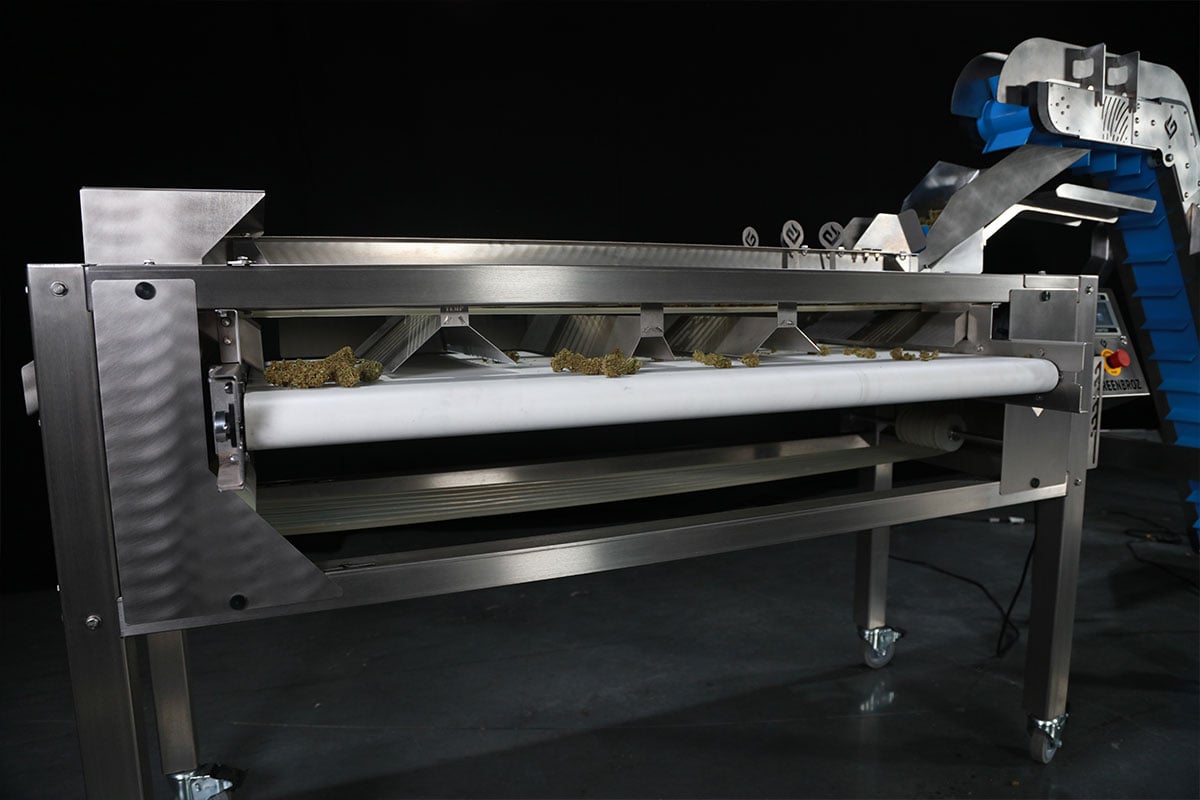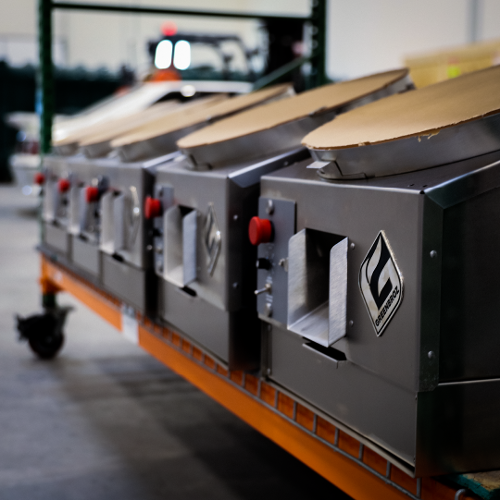The Ultimate Guide to Cannabis Equipment Maintenance
In the world of cannabis cultivation, your equipment is your best friend. Keeping it in pristine condition isn't just about prolonging its lifespan;...

The evolution of cannabis cultivation has played out as a consistent struggle to incorporate the tried and true small-scale growing techniques developed over generations alongside the technological advances in manufacturing equipment that are leading to new opportunities at an industrial scale. But with every step forward, it’s imperative we don’t lose sight of the attention to detail that goes into producing and processing the best possible cannabis flower — knowing that quantity can never compete with quality on a retail shelf. If the future of cannabis cultivation is not focused on quality as the highest priority, then the technological advances we make with trends such as manufacturing automation will not lead to sustainable growth or long-term profits.
According to the Pew Research Center, 91 percent of Americans feel that “marijuana should be legal for medical and recreational use (60%) or that it should be legal for medical use only (31%).” The result of this overwhelming public support has led to some form of legalization or decriminalization in most states followed closely by increasing demand for high-quality products all across the country. In 2020, expanding adult-use markets were largely responsible for the record $17.5 billion in sales, representing a 46 percent increase from 2019 — an especially impressive figure considering the negative impact of COVID-19 on manufacturing everywhere in the world. However, we’re only scratching the surface of actual demand with illicit or black market cannabis sales estimated to be more than $100 billion annually.
Opening up legal markets will help ensure legitimate cannabis growers in 2026 will be able to capture the $55.9 billion in domestic cannabis sales projected by BDSA. Outside of expanding legal markets and addressing the substantial issue of denying deductions through federal tax code 280E, the best opportunities to capture more revenue will likely be accomplished through efficiency and speed in large-scale production. Labor-intensive processes such as sorting cannabis nugs by size and grade for retail packaging or further processing that once required a trained eye and delicate fingers can be automated. In fact, modern cannabis processing equipment can sort through 360 pounds of cannabis per hour — 180 times faster than hand-sorting — while protecting the plant’s delicate compounds responsible for the quality and price of the final product.
In areas of the country where sun-grown cannabis has reigned supreme as a result of ideal soil and weather conditions, the month of October has always marked the beginning of the harvest season and the frenzied rush to process a year’s worth of plant growth into a sellable product as quickly as possible. This all-hands-on-deck race often means seasonal farmhands and trimmers working day and night over a short period of time to harvest, cure, trim, sort, and package for retail or further processing into edibles, concentrates, and other cannabis-infused products. From a pure operations standpoint, this is an inefficient process that’s neither great for the growers or the consumers. But it’s also risky business when something like mold or pests can decimate an entire grow at one time.
Today, the process of staggered harvesting through greenhouses and indoor grow rooms that are used to control the hours of light a female cannabis plant receives each day is helping vertically integrated cannabis companies implement cost-saving and product-protecting processes for many post-harvest activities. In many cases, these grow operations can effectively separate cannabis strains or let groups of plants develop independently to mitigate the risks of pests, bugs, or viruses.
Not all of the flowers on a female plant that contain desirable compounds including THC and CBD are going to reach maturity at the same time, which means the ability to know when to harvest what’s ready now while leaving the others time to develop is such a monumental step for the industry. Aside from the obvious benefit of processing only the best products, staggered harvesting also smooths out the manufacturing work flow and mitigates potential bottlenecks, allowing for the type of processing efficiency that’s needed to turn a significant profit when growing on a large scale.
Someday, we’ll certainly see fully automated farms producing vast fields of cannabis destined for processing into any number of cannabis-infused consumer packaged goods. But for now and into the near future, our ability to automate production is still largely limited to the post-harvest processes. According to Green Broz Founder and CEO Cullen Raichart, variability in growing practices, production system set-ups, and packaging requirements don’t provide the industry with the consistency required to make the move toward more manufacturing automation.
In a recent interview with Greenhouse Growers on why automation in cannabis is proving helpful, Raichart pointed out that we “haven’t reached the monoculture stage in the cannabis industry on a large scale yet. That kind of sterile, uniform, large-scale grow operation is not ubiquitous at this point. Once you get past the growing phase, you can move toward a bit more standardization in the harvesting phase.”
For medium to large operations growing cannabis, industrial automation is initially focused on the elimination of costly bottlenecks that force employees to wait while the product degrades, both of which eat into profit margins at a rapid pace. Trimming machines emerged as the first widely adopted example in the industry, eliminating most of the labor-intensive cannabis processing stage with the exception of hand-finishing for the highest quality products. In recent years, automated sorting and extraction equipment have also proven their value on the factory floor by eliminating contamination touchpoints and streamlining post-harvest processing.
One pre-harvest area we can expect to benefit from manufacturing automation advances sooner than later is the planting phase. Regardless of the growing medium or preferred potting solution, the same types of machines being used to plant tomatoes and soy beans will find their way into industrial cannabis operations. With many growers staggering their plants for multiple harvests each week, keeping the human effort focused on the maturing plants is a cost-effective strategy that will become commonplace. Eventually, everything from harvesting to dissecting and hanging will be accomplished by automated machinery on large farms, freeing experienced staff members to focus their energy and attention on higher value activities.
In the cannabis industry today, data and testing are most often limited to identifying potential contaminants in the name of consumer protection. However, the level of scrutiny that goes into ensuring everyone is producing a safe product is making its way into the production line for issues tied directly to profit margins. As cannabis continues on its evolutionary path from a small craft flower to a more traditional big business product, techniques to improve efficiency from seed to distribution will all rely on data derived from constant testing.
Once companies are able to establish baseline data points, the same process of continuous improvement developed in Japan that took Toyota from small domestic car producer to the world’s largest automotive manufacturer can begin. This transformation to lean management will help companies eliminate waste in the manufacturing process and ensure that businesses are able to deliver nothing but value in their customers’ eyes. The area with the biggest impact will be found in industrial automation.
Industrial hemp farms will eventually become powered by AI with live data, decades of testing information, and comprehensive manufacturing automation. However, the experienced human cultivator carefully watching over the stages of growth across the cannabis seed’s entire life cycle will always remain the most important factor in growing marijuana. While we’re still a very long way from eliminating the human element from the cannabis cultivation equation, that doesn’t mean we should overlook the significance or value that industrial automation can add to any existing cannabis growers or processors.
Never miss a blog posting or exclusive shop deal!

In the world of cannabis cultivation, your equipment is your best friend. Keeping it in pristine condition isn't just about prolonging its lifespan;...

In Humboldt County's green expanses, Jonah Carrington is changing the cannabis game with the GreenBroz Model G Precision Grinder. From his Santa...

Cannabis has come a long way, from black market only to decriminalization, and being legalized in one form or another is just about every state. The...